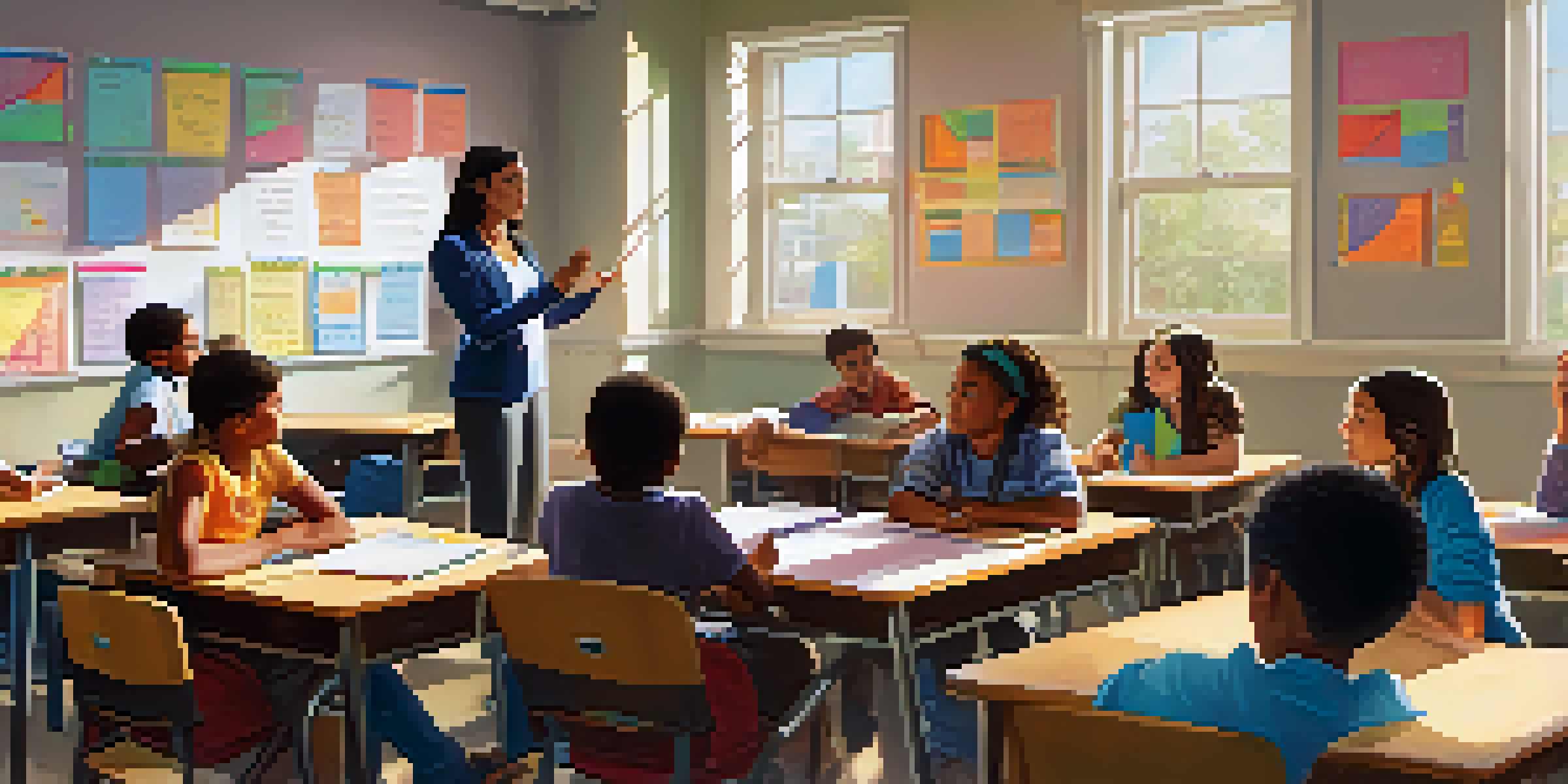Modeling Behavior: A Core Component of Social Learning Theory

Introduction to Social Learning Theory and Modeling
Social Learning Theory, developed by Albert Bandura, emphasizes the importance of observation and imitation in learning. At its core, it suggests that individuals can learn new behaviors simply by watching others, rather than through direct experience. This concept is known as 'modeling' and serves as a foundational element of the theory.
I am not a product of my circumstances. I am a product of my decisions.
Modeling behavior is the idea that we can learn actions, attitudes, and emotional responses by observing others. For example, a child might learn to tie their shoes by watching a parent do it. This observational learning highlights that much of our knowledge is acquired socially, rather than in isolation.
Understanding modeling behavior helps us grasp how social environments shape individual actions. It not only explains how we learn but also sheds light on the influence of role models in our lives, from parents to public figures.
The Process of Modeling in Social Learning
Modeling involves several key steps: attention, retention, reproduction, and motivation. First, an observer must pay attention to the model's behavior. Then, they need to retain the observed behavior in memory, which is essential for later reproduction. Lastly, motivation plays a vital role—if an individual sees a reward associated with the behavior, they are more likely to imitate it.

For instance, consider a classroom where a teacher demonstrates a new math concept. Students must focus on the teacher's methods, remember the steps, and feel encouraged to replicate the process during their practice. This cycle underscores how effective modeling can foster a supportive learning atmosphere.
Modeling Shapes Learning Behavior
Social Learning Theory emphasizes that individuals learn behaviors through observation and imitation of others.
Furthermore, the effectiveness of modeling can be influenced by the observer's characteristics, such as their age or prior experience. Younger children might be more inclined to imitate behaviors from older peers, while adults may look to experts in a field for guidance.
Types of Models: Live vs. Symbolic
Models can be classified as live or symbolic. Live models are individuals we interact with directly, such as friends, family, or teachers. On the other hand, symbolic models are portrayed through media, such as television shows or online videos, where behaviors and attitudes are showcased.
We learn from failure, not from success!
For example, a child might imitate a superhero's behavior from a cartoon, adopting traits they admire. This demonstrates how symbolic models can have a significant impact on behavior, even if the observer has never met the model in person.
Both types of models play crucial roles in shaping behaviors, but their influences can vary. Live models may provide immediate feedback and interaction, while symbolic models can reach a broader audience, allowing for diverse learning experiences.
The Role of Reinforcement in Modeling Behavior
Reinforcement is another essential element in the modeling process. When a model receives rewards for their behavior, it increases the likelihood that observers will imitate that behavior. This concept is rooted in the idea of vicarious reinforcement, where individuals learn not only from their actions but also from the outcomes of others' actions.
For instance, a student who sees their classmate praised for completing a project might feel motivated to engage with similar diligence, hoping for the same reward. This highlights how positive reinforcement can amplify the effects of modeling.
Reinforcement Boosts Imitation
Positive reinforcement increases the likelihood that observers will imitate behaviors seen in models.
Conversely, if a model faces negative consequences for their behavior, observers may be discouraged from mimicking that action. This dynamic creates a powerful feedback loop that influences learning through social interactions.
Real-World Applications of Modeling Behavior
Modeling behavior has practical applications across various fields, including education, therapy, and workplace training. In classrooms, teachers often use modeling to demonstrate skills, whether it's solving a math problem or conducting a science experiment. This approach helps students understand complex concepts more easily.
In therapy, particularly cognitive-behavioral therapy (CBT), modeling can help clients learn new coping strategies by observing their therapist. This process allows clients to practice these strategies in a safe environment, enhancing their ability to apply them in real-life situations.
Additionally, businesses can leverage modeling in training programs to foster desired workplace behaviors. By showcasing successful employee behaviors, organizations can cultivate a culture of excellence and collaboration among their teams.
Challenges and Limitations of Modeling Behavior
While modeling behavior is a powerful learning tool, it is not without its challenges. One significant limitation is the potential for negative modeling, where observers imitate harmful behaviors. For example, children exposed to aggressive behavior in media may be more likely to exhibit similar aggression.
Moreover, the effectiveness of modeling can vary depending on the observer's context and experiences. Someone who has had negative experiences with a particular behavior may be less inclined to imitate it, regardless of the model's success.
Diverse Models Enhance Learning
The presence of varied and positive role models is crucial for fostering well-rounded learning experiences.
Lastly, the diversity of models plays a crucial role in shaping well-rounded behavior. A lack of representation in media or limited exposure to different role models can hinder learning opportunities, making it essential to promote diverse and positive examples.
Conclusion: The Importance of Modeling in Learning
In conclusion, modeling behavior is a fundamental component of Social Learning Theory that significantly influences how we learn from one another. By observing and imitating others, we acquire new skills, attitudes, and behaviors that shape our interactions and experiences. This process highlights the value of social environments in facilitating learning.
Understanding the various aspects of modeling, from its mechanisms to its real-world applications, underscores its importance in education, therapy, and personal development. As we navigate our social landscapes, the ability to learn from others remains a critical skill.

Ultimately, fostering positive models and diverse role models can enrich our learning experiences, ensuring that individuals have the opportunity to grow and thrive in their environments.